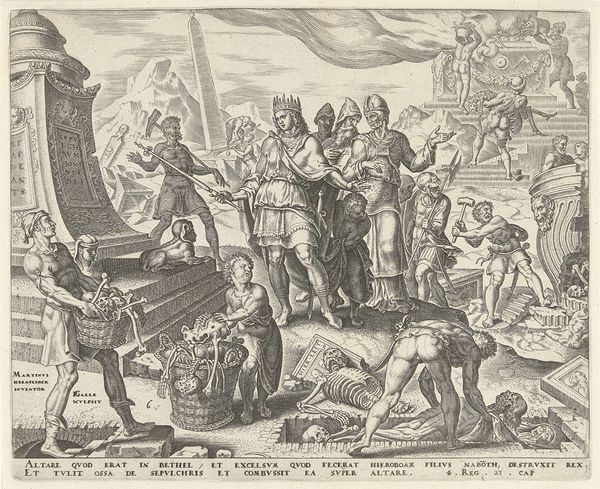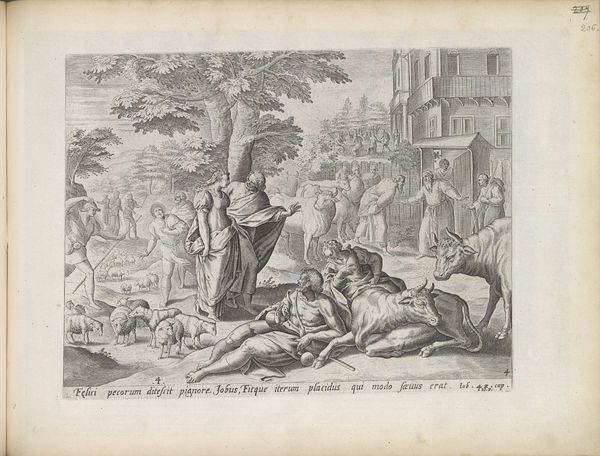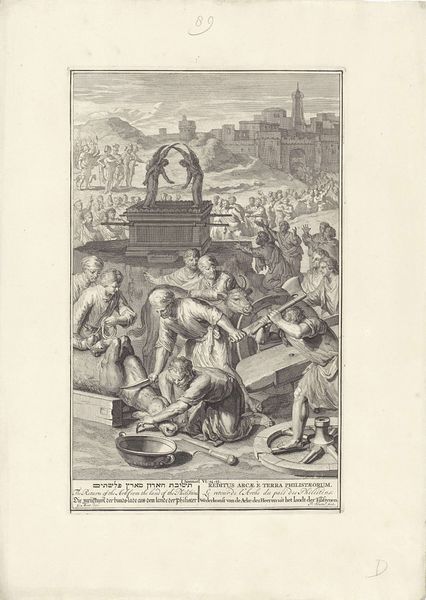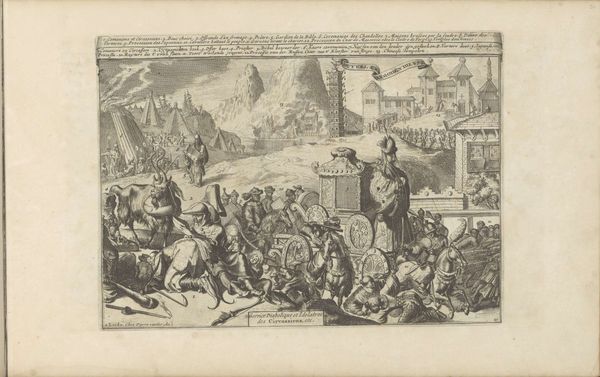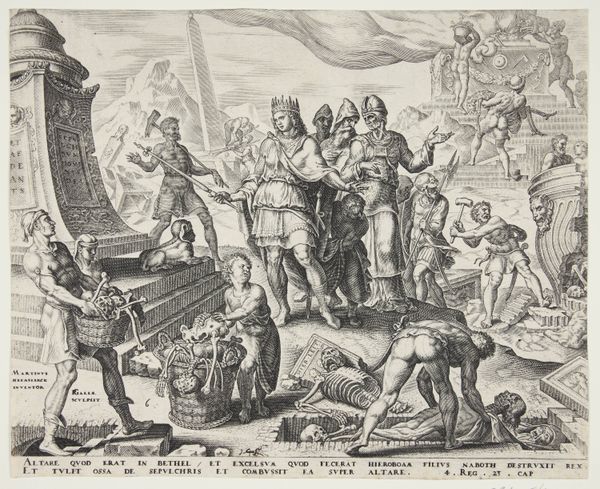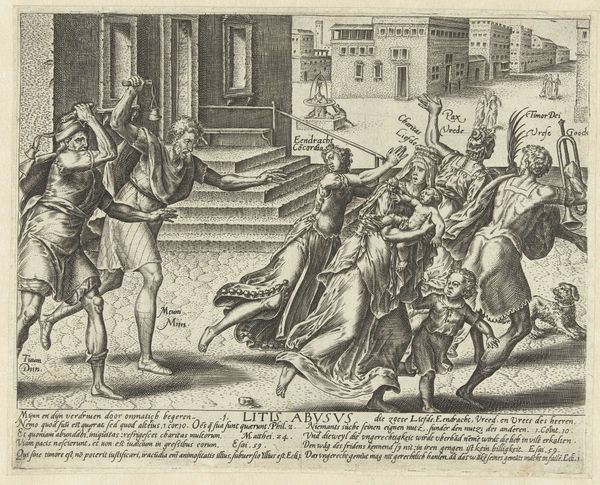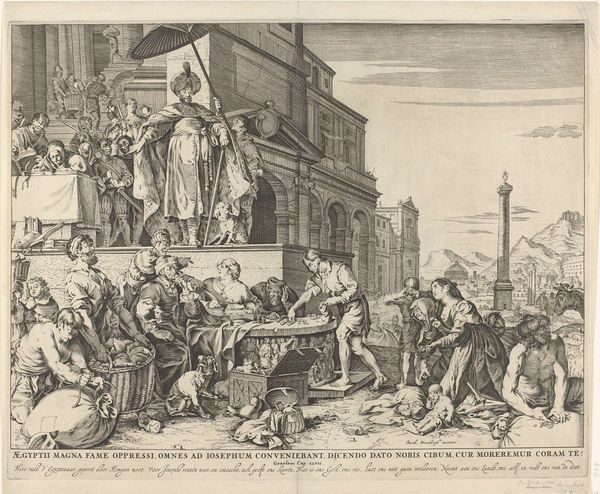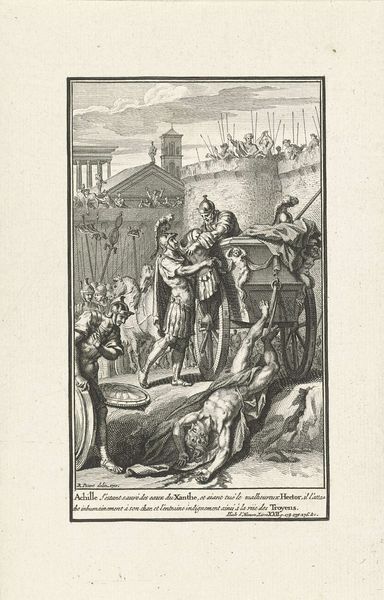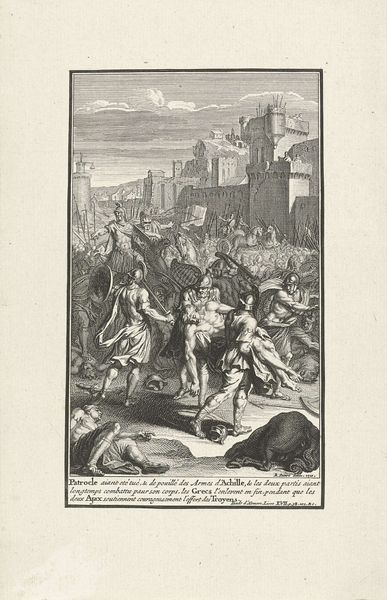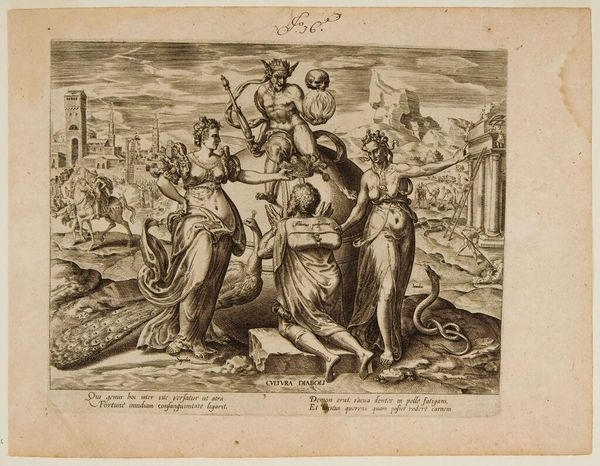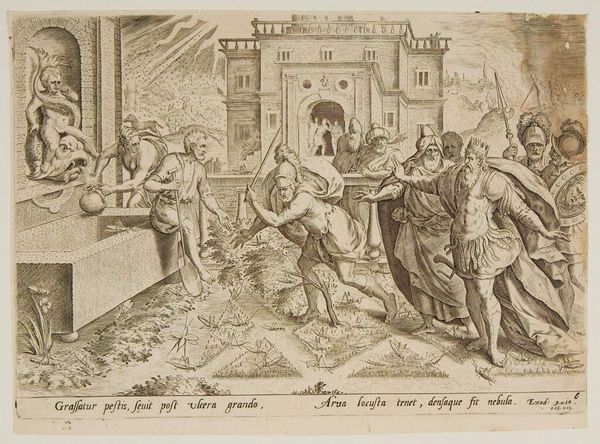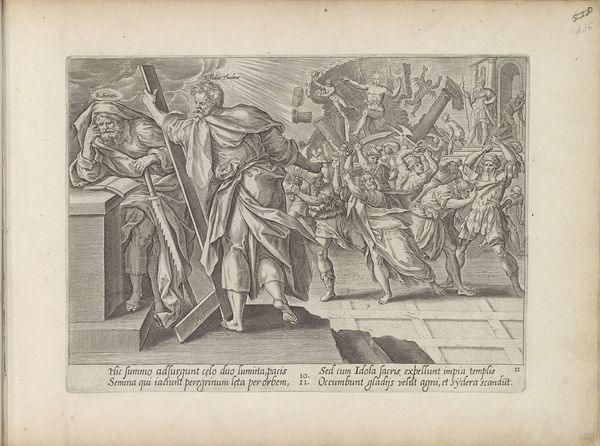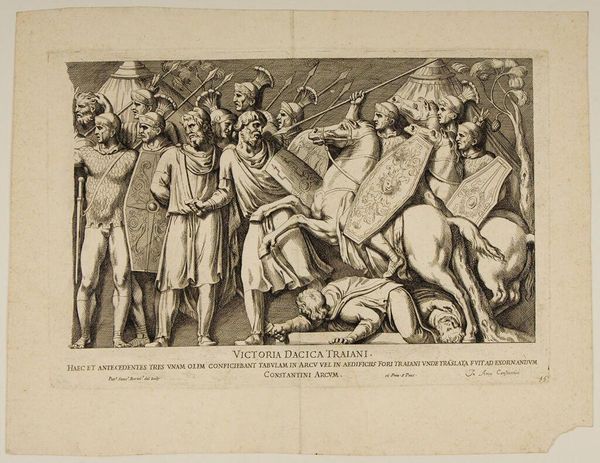
engraving
#
narrative-art
#
baroque
#
figuration
#
history-painting
#
engraving
Dimensions: height 213 mm, width 255 mm
Copyright: Rijks Museum: Open Domain
Curator: This intricate engraving is entitled "Koning Josia laat de offerplaats in Betel ontheiligen," dating back to 1643. It's currently housed at the Rijksmuseum. Anonymous, or currently unknown, but steeped in the conventions of its era. Editor: My goodness, there's a lot happening in there! It feels… intense. Dark, dramatic. A visual feast—if you're into dramatic destruction. There's so much to unravel here. Curator: Indeed. This work encapsulates the story of King Josiah defiling the altar at Bethel. Iconographically, we see figures enacting destruction—demolishing idols, disinterring bones. The whole piece feels like a purification ritual made visible. Note the careful attention to detail in the clothing. The body language indicates their engagement and activity in the event. The pyramid, column, mountain, people on the stairs. The space between these forms is so great they do not relate visually, making each group more segmented and isolated. Editor: So, destruction as a form of renewal, yes? It does play almost like a theatrical production with Josiah taking center stage in the process of erasing previous symbols. He becomes the symbol for something new, whatever "new" means to him. Do you find it ironic how something has to be made into something, and thus be unmade once the novelty is over, just so something can be made out of something. The cycle starts again! Curator: Cycles of destruction and renewal are pervasive in art. In a more limited sense of this picture and subject. Consider this piece not just as an act of iconoclasm, but also the reassertion of religious and political power. Notice how the architecture on the left stands to imply past forms that should remain dead, while at the right they engage in active, yet futile, demolishing activity. The baroque dynamism amplifies that power by highlighting Josiah's agency in that power display. Editor: Power plays; visual theatrics—it's all there. I find the casual desecration of human remains jarring in the work— the skeletal remains really put emphasis on what this ritual means. They are literally disrupting lives of the people from the past. So much to consider on our time, their space, where we are going and where we’ve come from. Curator: A potent reminder, then, of how the symbols we create and destroy shape our world. A good conversation for us to step away and think over. Editor: A thought-provoking dive, for sure! Thank you!
Comments
No comments
Be the first to comment and join the conversation on the ultimate creative platform.
